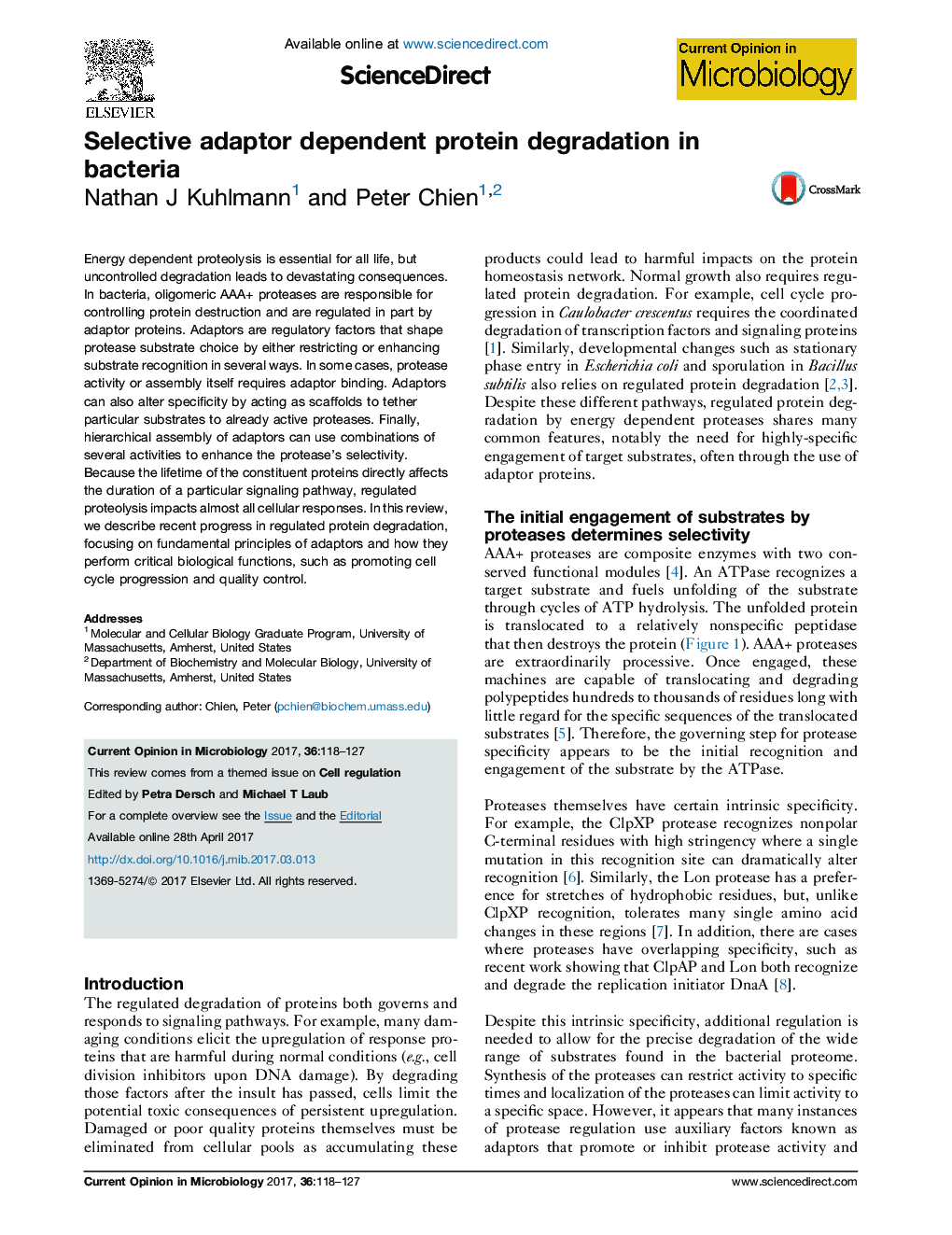| Article ID | Journal | Published Year | Pages | File Type |
|---|---|---|---|---|
| 5671756 | Current Opinion in Microbiology | 2017 | 10 Pages |
â¢Regulated protein degradation in bacteria relies on intrinsic protease specificity and adaptor-mediated elaboration of protease specificity.â¢Adaptors acting as simple scaffolds tether cargo with proteases and increase local effective concentration to drive substrate delivery.â¢Adaptors can be obligate activators of proteases or can prime already active proteases for selective substrate degradation.â¢Adaptor hierarchies can assemble from multiple adaptor types.â¢Poor quality proteins can be immediately targeted for degradation through constitutive recognition of degrons by adaptors.
Energy dependent proteolysis is essential for all life, but uncontrolled degradation leads to devastating consequences. In bacteria, oligomeric AAA+ proteases are responsible for controlling protein destruction and are regulated in part by adaptor proteins. Adaptors are regulatory factors that shape protease substrate choice by either restricting or enhancing substrate recognition in several ways. In some cases, protease activity or assembly itself requires adaptor binding. Adaptors can also alter specificity by acting as scaffolds to tether particular substrates to already active proteases. Finally, hierarchical assembly of adaptors can use combinations of several activities to enhance the protease's selectivity. Because the lifetime of the constituent proteins directly affects the duration of a particular signaling pathway, regulated proteolysis impacts almost all cellular responses. In this review, we describe recent progress in regulated protein degradation, focusing on fundamental principles of adaptors and how they perform critical biological functions, such as promoting cell cycle progression and quality control.
